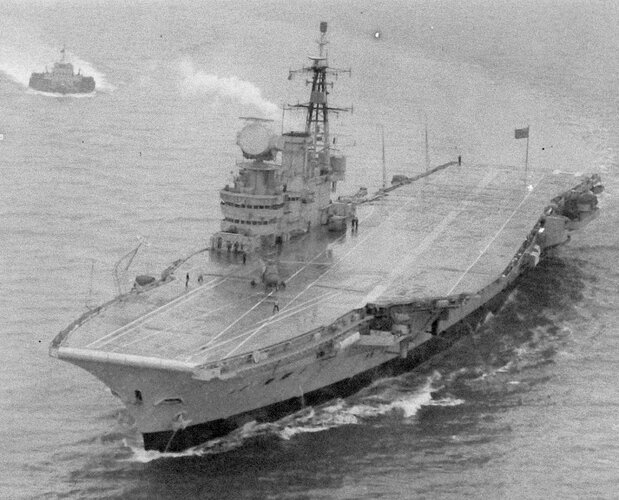- Joined
- 27 September 2006
- Messages
- 5,744
- Reaction score
- 5,635
The saga of HMS Hermes is well known. But it might have been different if the RN had followed the US example and kept her as an ASW carrier or interim Sea Control Ship.
The US were introducing the S3 Viking on to their attack carriers but were keen to get as many to sea as possible.
HMS Hermes began its conversion to a planned Commando Ship role replacing Albion. SACLANT asked the RN to look at operating S3 Vikings from her in addition to the Seakings.
Retaining the waist catapult would also allow the Hermes to retain Gannet AEW and COD aircraft to provide information for its T42 and County class escorts.
By 1974 Hermes had recommissioned as a combined Commando and ASW ship. 8 S3K Vikings on loan from the US joined the ship and the Gannets from her last fixed wing commission.
The Labour Government ordered Sea Harriers for Hermes and the new Invincibles.
The loan of S3 aircraft came to an end in 1976 when NATO urged the RN to buy them outright. However, the RAF had a surplus of Nimrods withdrawn from Malta and the S3 were reluctantly returned to the States.
The Gannets remained. And when the new Sea Harriers joined the ship they added greatly to her capabilities.
The US were introducing the S3 Viking on to their attack carriers but were keen to get as many to sea as possible.
HMS Hermes began its conversion to a planned Commando Ship role replacing Albion. SACLANT asked the RN to look at operating S3 Vikings from her in addition to the Seakings.
Retaining the waist catapult would also allow the Hermes to retain Gannet AEW and COD aircraft to provide information for its T42 and County class escorts.
By 1974 Hermes had recommissioned as a combined Commando and ASW ship. 8 S3K Vikings on loan from the US joined the ship and the Gannets from her last fixed wing commission.
The Labour Government ordered Sea Harriers for Hermes and the new Invincibles.
The loan of S3 aircraft came to an end in 1976 when NATO urged the RN to buy them outright. However, the RAF had a surplus of Nimrods withdrawn from Malta and the S3 were reluctantly returned to the States.
The Gannets remained. And when the new Sea Harriers joined the ship they added greatly to her capabilities.

